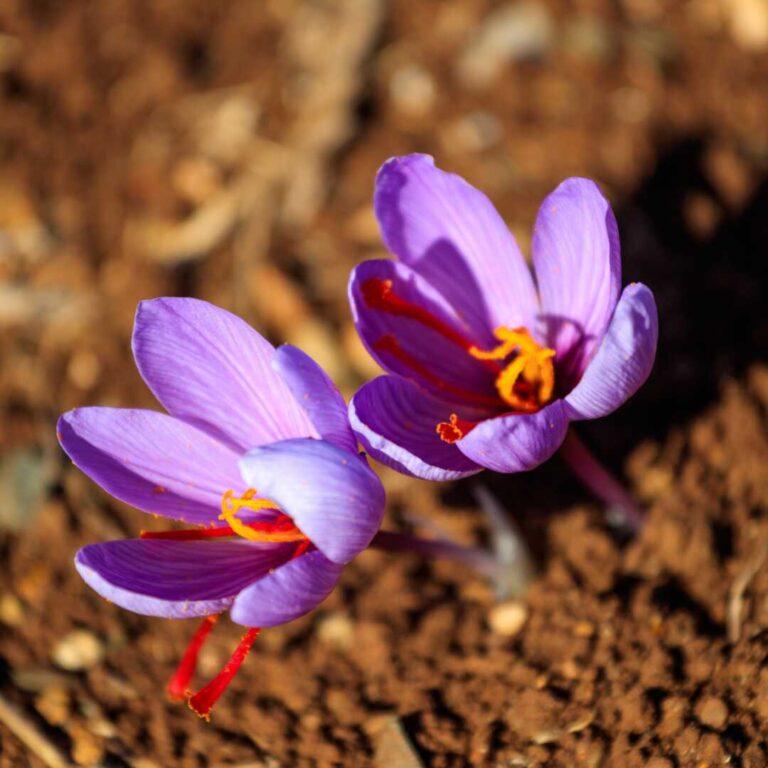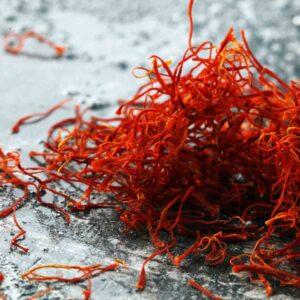Kozani Crocus, 10 tips for its cultivation!
Edited by AgriSC Team
- Crocus or Saffron, known in Greece as Kozani Crocus, as it is now grown only in the Kozani region, is one of the most expensive spices in the world. It is also known for its pigment and uses as a medicine and herb.
- The edible Saffron is cultivated for the collection of flower stigmas. The spots are reddish-orange and have significant medicinal, coloring, and flavoring value. The yellow anthers are also collected from the flower, producing an inferior pigment.

Did you know that…?
Crocus in Greece has been cultivated since Minoan Crete. Hence, the famous fresco “KROKOSYLEKTIS” is found in the palace of Knossos. Today, it is produced only in Kozani and imported from Austria!
Let’s see some tips for growing saffron in Kozani below.
When to plant Kozani Crocus?
The saffron of Kozani is planted in fields cultivated with cereals in the same year. Therefore, field preparation begins after harvest. After one or two plowing operations have been carried out, the horns are planted in August-September. However, it can also be done earlier, throughout the summer.
How to plant the Saffron of Kozani?
The crocus stalks (tubers) used for planting are taken from old crocus plantations (6-7 years old). After being cleaned and sorted, they are placed in furrows 20-25 cm deep. The stems should be 10-15 cm apart if planted in rows. On the other hand, the rows should be about 20cm apart.
Where to plant Kozani Crocus?
Crocus prefers light, medium fertility, and well-aerated soils. Clayey, compact, and moist soils should be avoided as they make it difficult for the bulbs to reproduce and make it easier for them to rot.
Crocus is also suitable for growing in warm, temperate climates, and the plant is reasonably drought-resistant. Heavy rainfall damages the plant and the flower, except for May, which helps to strengthen the bulbs.
Did you know that…?
For one kilo of Kozani saffron fiber (dried substance), 150,000 flowers are needed.
How to care for Kozani Saffron?
Although Crocus requires extreme weather conditions for growth, the flowering stage is particularly critical. At that time, the plant should be guarded against frosts (temperatures below 15oC) and prolonged droughts. In addition, it is crucial to protect the plants from uncontrolled grazing by livestock.

When to harvest Kozani Crocus?
The harvested flowers begin to emerge around the beginning to middle of October. They should be harvested immediately so as not to alter the stigmas’ characteristics (color and aroma).
Harvesting requires skill. The reddish-orange, fiber-like spots inside the petals must be carefully closed before the flower is cut. It is a process that begins at sunrise, ends at sunset, and takes about 20 days.
How to dry the Crocus?
After carefully separating the petals from the stigmas and anthers, with the help of fans or manually, drying follows. This is the most important and delicate operation. It is, therefore, vital that it is carried out with great care to preserve all the characteristic properties of the saffron.
Drying is usually carried out in large, airy, and heated rooms. The fresh curd is placed in thin layers on crates with a wire mesh base. Particular attention is required for foreign matter and micro-organisms (fungi) growth.

How to use Kozani Saffron?
Ο Saffron has wide use as a medicine, spice, essential oil, and even in painting as a pigment. Kozani saffron is mainly used in cooking, as a decoction, or in a mixture of herbs.
It is particularly favored for its antioxidant and anti-cancer properties. Two saffron fibers (spots) are enough to give your food a color (yellow), taste (spicy), and aroma (strong).
Which pests and diseases are found in cultivating saffron in Kozani?
During the flowering period, the crop is threatened by frost, prolonged drought, and heavy rainfall. In addition, however, it is also threatened by natural pests and diseases. Moles and rats dig burrows and destroy the bunches in the ground. As a result, the plantations are threatened with extinction if they are not controlled.
At the same time, two fungal diseases found in crocus are Rhizoctonia and Dry Gangrene. In the former, we see the weakening of the plants, which then turn yellow, take on a moldy smell, and start to dry out. In the second, the fungus Sclerotinia buiborum destroys the flesh of the bark. The plant, in this case, is exhausted and stops growing. Both these diseases require strict control. We are rooting and burning the affected bunches and chemical soil disinfection.
How much money does it cost to cultivate saffron?
Growing saffron is relatively inexpensive as there is no chemical fertilization. However, for best results, it is recommended to add manure as a surface fertilizer.
If you have plant material available, production costs are estimated at 400-500 euros per acre. Otherwise, the value of the plant material is EUR 1000/ha.

What are the benefits of cultivating Crocus?
Saffron is a very profitable crop that usually comes as an additional or second income. This is because, in addition to planting, it requires 20 days of continuous work. Approximately one kilogram of saffron is priced at 2000 euros depending on the crop. For this reason, it is one of the most expensive spices in the world (red gold).
One thing is sure. The collection and separation of the marketable stigmas is a laborious process. It does, however, give a good income to the producer without mediators and intermediary traders.
Bibliography: Dordas, Ch. 2012. Aromatic and Medicinal Plants. Thessaloniki: Synchroni Paideia.
If you are in an agronomy business, own an agronomy shop, and are seeking a collaboration opportunity with AgriSC, fill out the form below. Our team will respond promptly!
